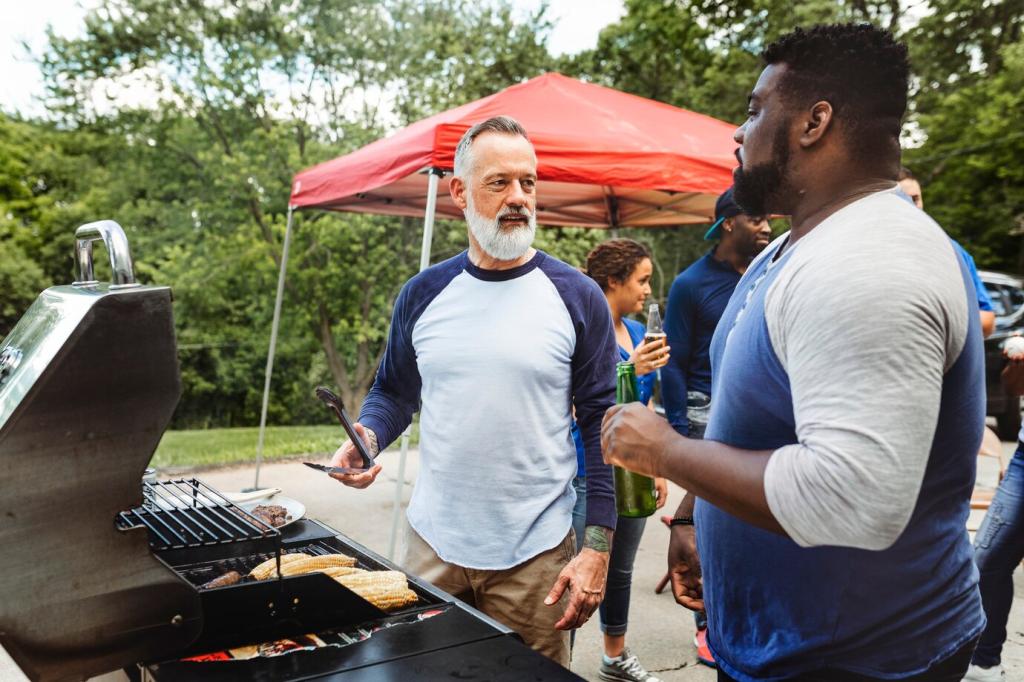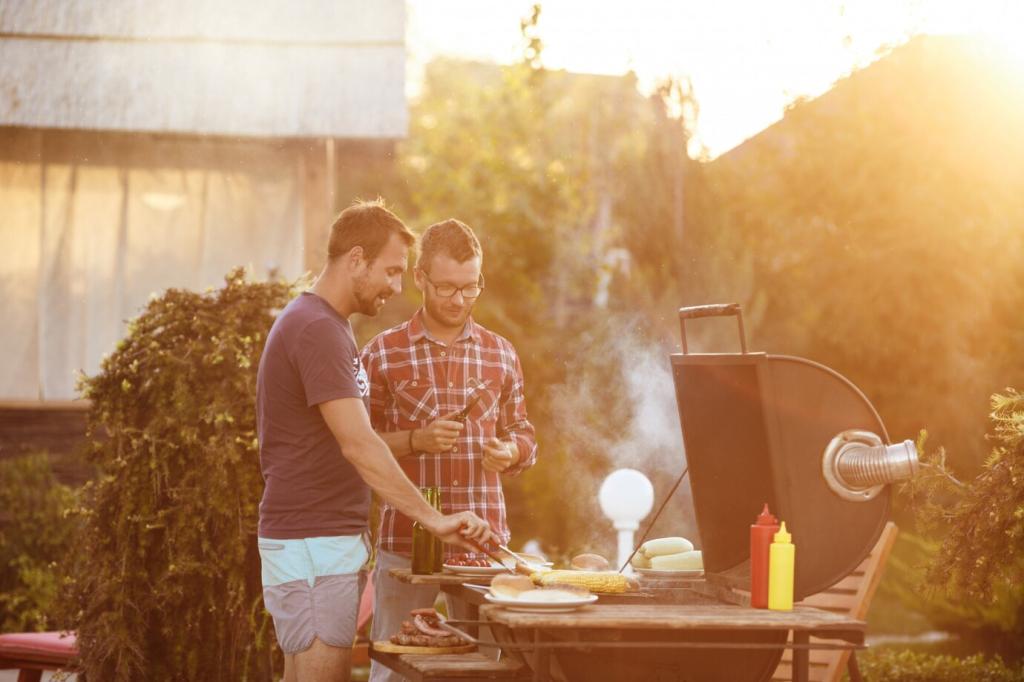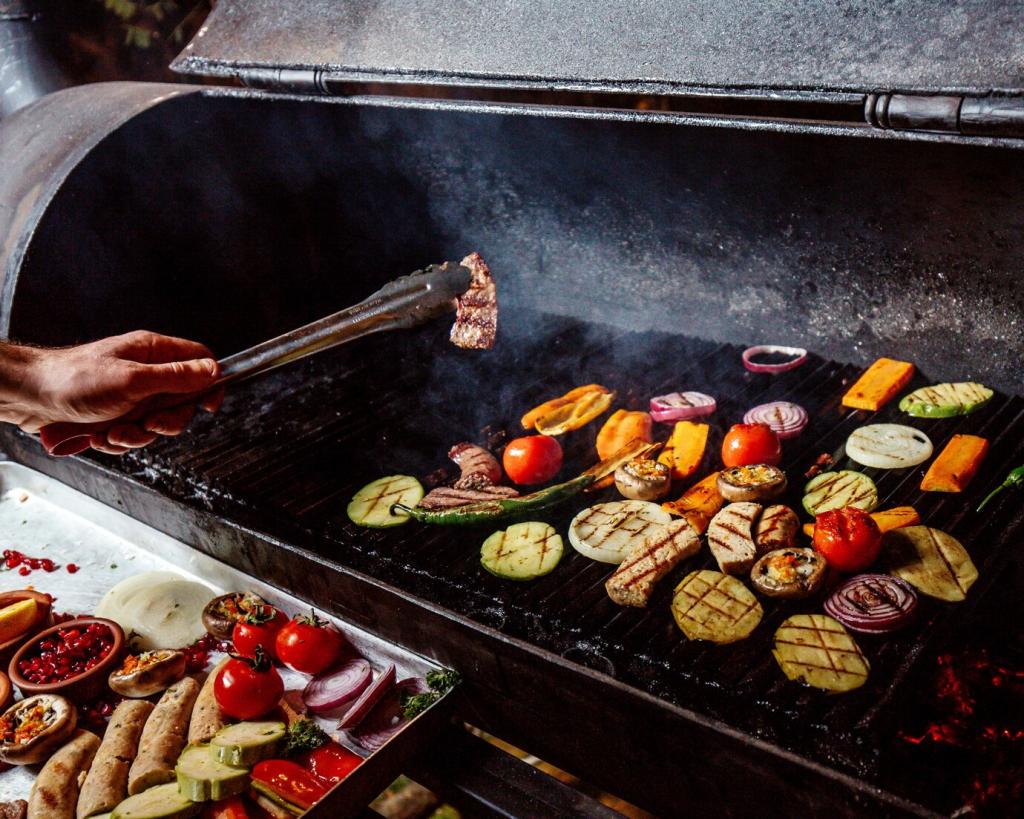Grilling Vegetables: A Beginner's Guide
Chosen theme: Grilling Vegetables: A Beginner’s Guide. Light the grill, grab fresh produce, and let’s turn simple vegetables into smoky, colorful plates that sing with flavor. Share your first grilling win in the comments and subscribe for weekly veggie-forward inspiration.
Your First Grill Setup for Vegetables
Heat Zones and Temperatures
Create a two‑zone fire: one side medium‑high for searing, the other cooler for finishing. Preheat 10–15 minutes until grates are hot. Aim for roughly 375–450°F for most vegetables, keeping a thermometer handy. Ask questions in the comments if your grill runs hotter or cooler.
Clean Grates, Better Flavor
Brush grates while hot to remove residue, then lightly oil a folded paper towel with tongs. Clean grates help vegetables release naturally, leaving bold grill marks instead of stubborn sticking. Try rubbing a halved onion across hot grates, then tell us if you noticed sweeter aromas afterward.
Essential Tools for Beginner Veg Grillers
Long tongs, a sturdy spatula, a grill basket, metal skewers, and an instant‑read thermometer are your starter kit. A silicone brush helps glaze at the end without scorching. Save our checklist, and subscribe for a printable version plus a first‑timer timing chart.
Choosing and Prepping Vegetables
Start with zucchini, bell peppers, asparagus, portobello mushrooms, corn on the cob, red onions, and halved cherry tomatoes in a basket. They’re forgiving, caramelize beautifully, and teach timing quickly. Share your market haul, and we’ll recommend cuts and techniques for each vegetable.
Choosing and Prepping Vegetables
Cut thick planks for zucchini and eggplant, wedges for onions, slabs for peppers. Skewer mushrooms and cherry tomatoes to prevent slipping. Use a grill basket for small, fussy pieces. Wooden skewers should soak briefly to resist scorching. Comment with your favorite skewer combos and we’ll feature them.

Use three parts oil to one part acid—olive oil with lemon juice or sherry vinegar—plus garlic, thyme, or oregano. Marinate tender vegetables 15–30 minutes, no longer. This brightens flavor without making textures soggy. Tell us your favorite herb pairing, and we’ll test it next weekend.
Flavor Foundations: Marinades, Rubs, and Glazes
Mastering Time and Temperature
Sear vegetables over medium‑high heat to mark and caramelize, then slide to the cooler zone to finish without burning. Thick slabs of eggplant or sweet potato benefit from this rhythm. It’s a beginner‑friendly approach that keeps textures luscious. Comment if your grill lacks zones; we’ll troubleshoot.

Mastering Time and Temperature
Asparagus should bend with a gentle snap, mushrooms run juicy, and peppers wrinkle slightly with softened flesh. Corn turns deep yellow and plump; onions become translucent at the edges. Taste a piece—flavor beats timers. Share your timing notes to help fellow first‑timers dial it in.

Gentle Smoke for Delicate Vegetables
Use apple, alder, or cherry for zucchini, asparagus, and tomatoes. Keep smoke light and steady by adding a small handful at a time. Lid closed equals stable flavor. Note your favorite pairing, and we’ll compile a community chart for new grillers.

Bold Woods for Hearty Vegetables
Hickory or oak suits portobello mushrooms, onions, and sweet potatoes. Their sturdy textures welcome deeper smoke and spice rubs. Go slow to avoid bitterness. Pair with garlicky chimichurri for balance. Tell us if you prefer oak’s roundness or hickory’s punch on mushroom steaks.

Easy Foil Pouch on Gas Grills
Place dry wood chips in a foil pouch, poke a few holes, and set over a burner until smoking. Position vegetables nearby to kiss them with aroma. It’s simple, cheap, and perfect for beginners. Share photos of your setup so newcomers can copy confidently.
Serving, Sauces, and Leftovers
A squeeze of lemon, a dash of red wine vinegar, or a spoon of salsa verde wakes charred edges. Shower with dill, basil, or parsley for freshness. I converted a Brussels‑sprout skeptic with this trick. Comment with your favorite finishing touch and inspire a beginner tonight.
Safety, Timing, and Troubleshooting
Use separate boards for raw proteins and vegetables, wash hands often, and keep a clean zone for cooked food. Never reuse marinade unless boiled. Keep an extinguisher nearby and stabilize your grill. New here? Subscribe for our seasonal safety checklist.
Safety, Timing, and Troubleshooting
Wind steals heat, so preheat longer and rotate grates for even cooking. Rain? Keep the lid down and trust your zones. Once, a gusty evening taught me patience and produced my best onions yet. Share your weather wins to encourage newer readers.


